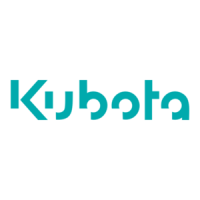What to do if my Kubota V2203-M-E3 suddenly stops?
- JJoseph HuberAug 19, 2025
If your Kubota Engine suddenly stops, first, check the fuel tank to ensure there is enough fuel and refill if necessary. Also, inspect the fuel system for any air or leaks. A bad nozzle could also be the cause, and it should be replaced if needed. Overheated moving parts due to a shortage of lubrication oil or improper lubrication can also cause the engine to stop. Check the engine oil level using the oil level gauge and inspect the lubricating oil system. Replace the oil filter cartridge every two oil changes and verify that the engine bearing clearances are within factory specifications.

